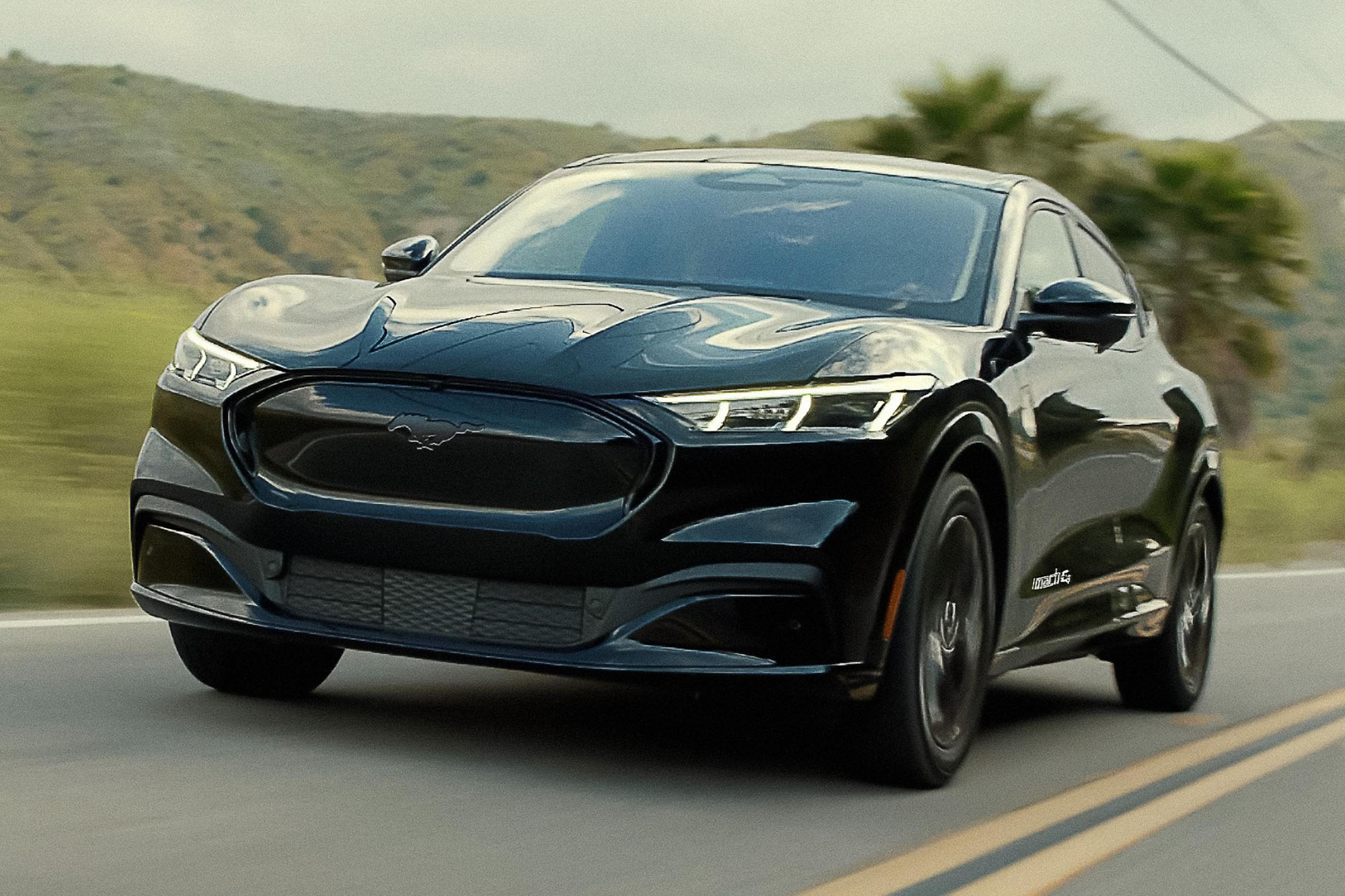4 Reasons Why New Cars Are So Heavy
Batteries, safety, and comfort features add weight.
 Ford
Ford
Like servings of soda and television screens, cars are generally bigger today than they were decades ago. They're heavier, too. In 2022, the average new car tipped the scales at 4,329 pounds, which represented an increase of about 1,000 pounds over car weights in 1980. But size isn't the only factor responsible for the weight gain.
Electrification Requires Heavy Batteries
Given their components, electric and hybrid cars are substantially heavier than all-gas models. The average electric vehicle (EV) hauls around a 1,000-pound battery pack, and adding range usually requires fitting a bigger battery. This further increases weight and helps explain why some crossovers weigh as much as a pickup.
For example, with the extended-range battery and all-wheel drive, Ford's Mustang Mach-E GT weighs roughly 5,000 pounds, or about the same as a V8-powered F-150 Tremor pickup.
The Hyundai Kona — which is offered with both gasoline and electric power — clearly illustrates the heavier nature of EVs. While a gas-powered Kona Limited weighs 3,318 pounds with front-wheel drive and 3,505 pounds with all-wheel drive, the Limited trim of the Kona Electric, which comes only in front-wheel drive, outweighs both at 3,891 pounds.
All-Wheel Drive Adds Weighty Components
In 2021, nearly 60% of 2021-model-year light-duty vehicles sold featured four- or all-wheel drive, and regardless of powertrain type, all-wheel drive adds weight.
In a gasoline-powered model, sending power to all four wheels normally involves adding a second axle, a driveshaft, and — in some applications — a transfer case. Making an EV all-wheel drive, on the other hand, usually requires installing a second motor.
The gas-powered 2025 Honda Pilot, a sizable SUV, weighs 4,306 pounds with front-wheel drive and 4,497 pounds with all-wheel drive, for example. The rear- and all-wheel-drive variants of the electric 2024 Hyundai Ioniq 5 SEL, a small crossover, come in at 4,297 and 4,546 pounds, respectively.
With Greater Safety Comes Greater Weight
Whether it's expected by drivers or mandated by regulations, modern safety equipment is partly responsible for making cars heavier.
Since 1998, airbags have been required on most new vehicles sold in the United States. Over the years, airbag systems have only grown in complexity, and most new cars feature at least six. While a typical airbag only weighs about 3.5 pounds, the wiring, sensors, and computer processors all add heft.
Electronic driving aids such as automated emergency braking, adaptive cruise control, and lane-keep assist also rely on an array of sensors, cameras, and wiring.
Comfort and Technology Features Pack on the Pounds
Another reason cars have put on weight is that manufacturers have upped the available comfort and convenience features. Heated and ventilated seats, touchscreens, digital instrument clusters, and acoustic glass all increase the total pounds.
Added features also explain the weight discrepancy between base and higher trim levels. The entry-level Honda Civic, for example, weighs 2,877 pounds, compared with the Sport trim's 2,935 pounds. While both use the same engine, the Sport comes standard with an upgraded sound system, proximity keyless entry, and sport pedals — all of which add weight.
Written by humans.
Edited by humans.
 Ronan Glon
Ronan GlonRonan Glon is an American journalist and automotive historian based in France. He enjoys working on old cars and spending time outdoors seeking out his next project car.
Related articles
View more related articles